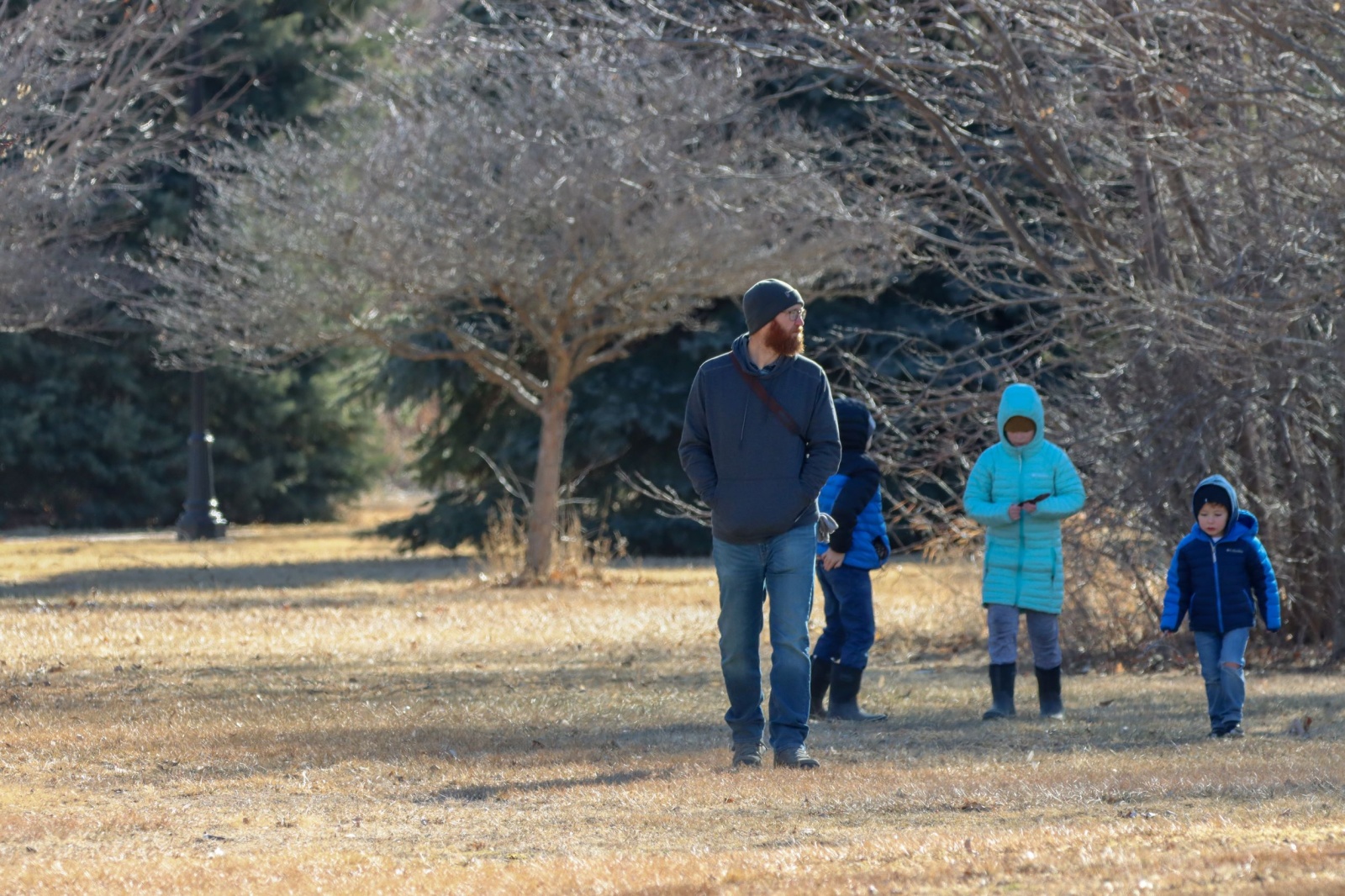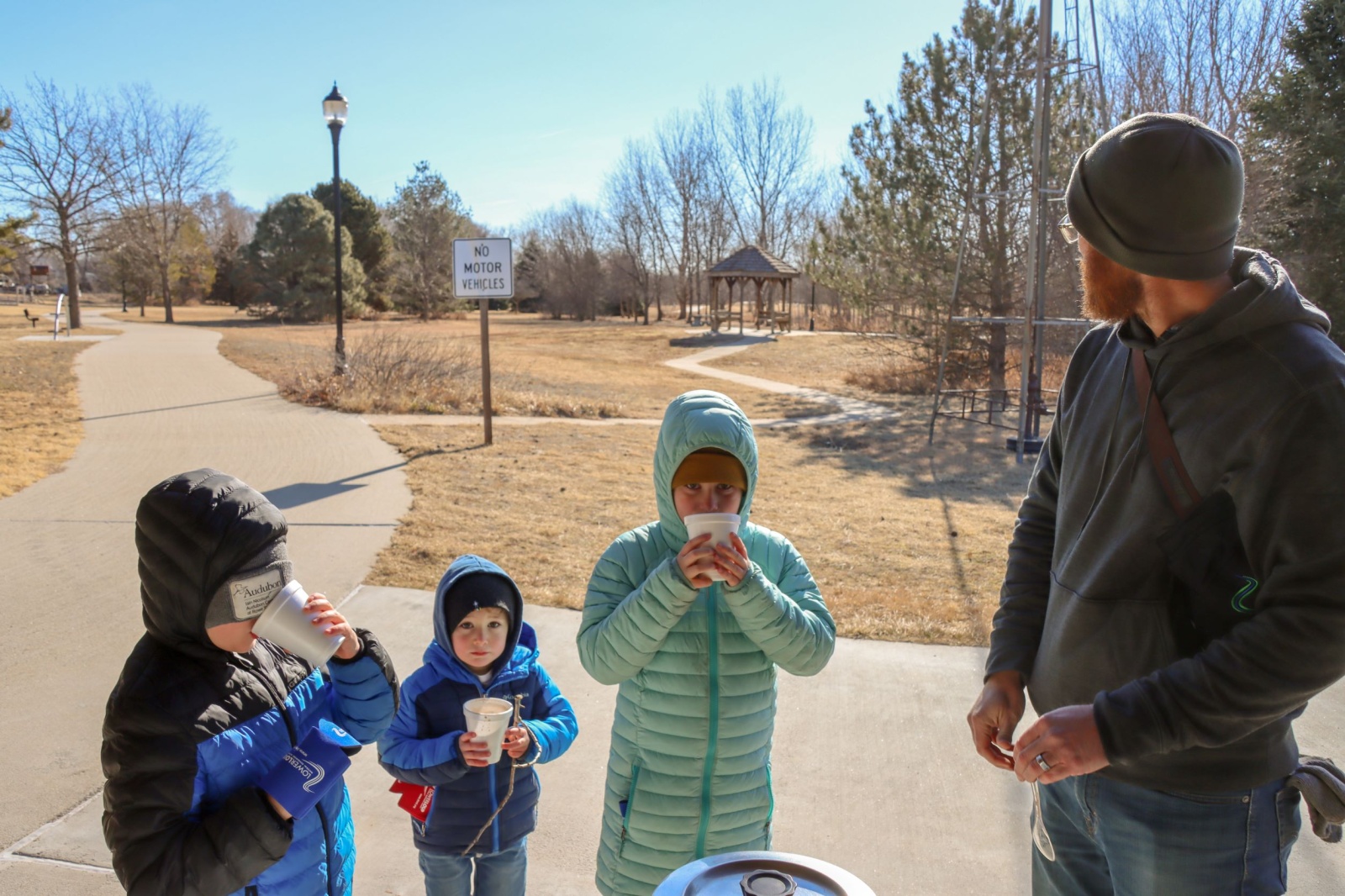Twenty people braved sunny but crisp winter conditions on Saturday, Feb. 19, for the Lower Loup NRD’s Great Backyard Bird Count.
Gathered at the Lower Loup NRD Arboretum in Ord, birders from Ord, Burwell, Arcadia; and as far away as Grand Island and Kearney, filled up (and warmed up) with coffee and hot chocolate before, during and after wandering the Arboretum trail documenting the bird species and number of each species that they saw. Some continued down the hike/bike trail past Ord Cemetery to Dane Creek and Auble’s Pond for more birding action.
The birdwatchers observed common backyard birds such as house sparrows, Eurasian collared doves, house finches, goldfinches, downy woodpeckers and dark-eyed juncos. Children excitedly pointed out a trio of cardinals and a pair of blue jays. Nearly 70 Canada geese were seen flapping to cornfields north of Evelyn Sharp Field, two immature bald eagles soared in wide arcs overhead, and even a rough-legged hawk was glimpsed.
Altogether, in only two hours, the wildlife enthusiasts documented 20 bird species and 326 birds in all. The most common bird encountered was the American robin, with 94 recorded. A brown thrasher – a rarity in Nebraska this time of year – was also reported, along with two Harris’s sparrows – the largest sparrows in America. Cottontail rabbits and fox squirrels also were seen.
The Great Backyard Bird Count was founded 25 years ago by the Cornell Lab of Ornithology and the National Audubon Society. More than 160,000 people took part in 2021. Participants at the LLNRD event received caps and other gear; and young budding birders received participation certificates featuring a western meadowlark, Nebraska’s state bird.
“The results from the Lower Loup NRD’s Great Backyard Bird Count will be submitted to Cornell,” said Information Specialist Alan Bartels. “The event is a way to gather information on bird population trends from around the world through the use of citizen science. On top of that, it is a great reason to get outside – even during winter – and explore the Lower Loup Natural Resources District. I think that a lot of people would be surprised to learn of the diversity of animal life just within the LLNRD’s 11-acre Arboretum on the northwest edge of Ord. Just imagine what could be seen while exploring the entirety of the Lower Loup NRD, the largest of Nebraska’s Natural Resources Districts, and arguably the most beautiful.”
All photos by Alan Bartels/LLNRD.













































